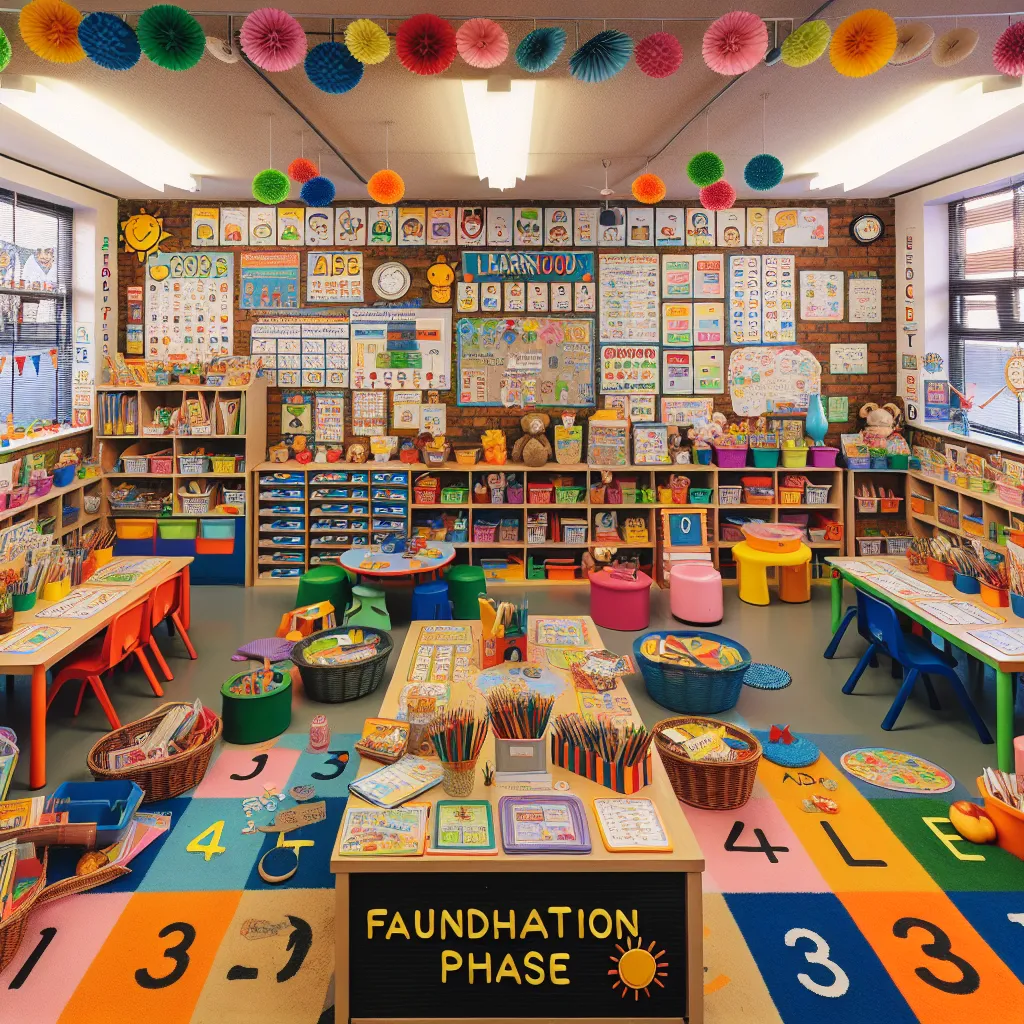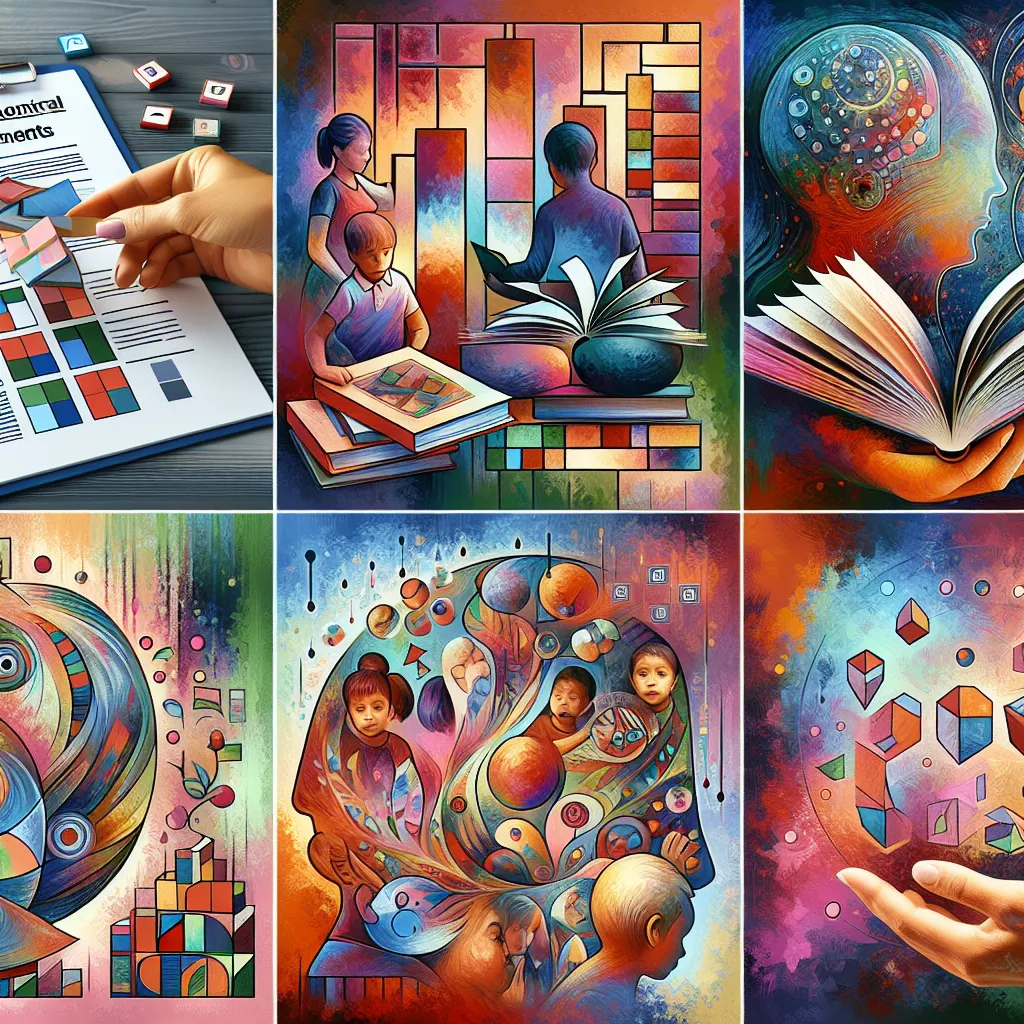Ask AI on The Internet
Question: 2 Read the following statement carefully and then answer the question that follows. “Many sources have suggested that creative teachers can have an impact on the improvement of students’ academic achievement” (Mulyono, 2016: 297). 4.2.1 Do you think Carol’s Reading Pillars of Creativity can be used in the foundation phase? Give two reasons for your answer. (5) 42.2. Critically analyse the seven Carol’s Reading pillars of creativity. a) Self-esteem (5) b) Creative reflection (5) c) Creative questions (5) d) Creative opportunity (5) e) Creative model (5) f) Creative connection (5) g) Creative problem-solving (5) T
### 4.2.1: Can Carol's Reading Pillars of Creativity Be Used in the Foundation Phase? Yes, Carol's Reading Pillars of Creativity can be effectively used in the foundation phase for the following reasons: 1. **Enhanced Engagement**: Young children are naturally curious and imaginative. Integrating creativity into their learning process can make lessons more engaging and enjoyable. This can help in capturing their interest and improving their willingness to participate and learn. 2. **Development of Critical Thinking**: Early exposure to creative thinking encourages the development of essential cognitive skills. These skills, such as problem-solving and critical thinking, are foundational for later academic success and can be nurtured effectively through creative approaches from a young age. ### 4.2.2: Critical Analysis of Carol’s Reading Pillars of Creativity #### a) Self-Esteem - **Description**: Self-esteem in the context of creativity refers to the confidence individuals have in their ability to think creatively and express themselves. - **Critical Analysis**: High self-esteem allows students to take risks in their thinking and learning activities. In the foundation phase, building self-esteem is crucial, as students are forming their self-concept. Activities that are designed to celebrate their unique ideas and efforts can foster a positive learning environment and encourage continual creative attempts. #### b) Creative Reflection - **Description**: Creative reflection involves thinking back on one's creative efforts to understand what worked, what didn’t, and why. - **Critical Analysis**: Reflection helps students understand their learning processes and outcomes. Encouraging young children to reflect on their activities can help solidify their understanding and promote a mindset of continuous improvement. It's essential to guide this reflection in age-appropriate ways, such as through discussions or visual journaling. #### c) Creative Questions - **Description**: Creative questioning involves asking questions that stimulate deeper thinking and exploration. - **Critical Analysis**: Asking open-ended and thought-provoking questions encourages young learners to think beyond the obvious and explore various possibilities. This pillar can be particularly effective in the foundation phase as children learn to frame their questions, fostering an inquisitive mindset that is vital for lifelong learning. #### d) Creative Opportunity - **Description**: Creative opportunity refers to providing circumstances that allow creativity to flourish. - **Critical Analysis**: Creating an environment rich in creative opportunities enables students to experiment and explore different aspects of learning without fear of failure. For young children, this could mean providing diverse materials for play, engaging them in hands-on learning activities, and offering choices in how to complete tasks. #### e) Creative Model - **Description**: A creative model serves as an example that inspires others to think and act creatively. - **Critical Analysis**: Teachers and peers can act as creative models who demonstrate innovative thinking and problem-solving. In the foundation phase, adults can model creative thinking by expressing their thought processes aloud, thereby helping children understand how to approach problems in creative ways. #### f) Creative Connection - **Description**: Creative connection involves linking different concepts, ideas, or areas of knowledge creatively. - **Critical Analysis**: Developing the ability to make creative connections enhances students' integrative thinking skills. In early education, this can be practiced through interdisciplinary learning, where children see how subjects connect and apply their knowledge in multifaceted ways, such as linking art projects to science topics. #### g) Creative Problem-Solving - **Description**: Creative problem-solving is the ability to find innovative solutions to challenges. - **Critical Analysis**: Promoting creative problem-solving skills helps students develop resilience and flexibility in their thinking. For young children, age-appropriate puzzles, games, and story scenarios that encourage them to think of multiple solutions can be effective methods to cultivate these skills. In conclusion, integrating Carol's Reading Pillars of Creativity into the foundation phase is not only feasible but highly beneficial. These pillars cover a comprehensive range of skills and attitudes that foster a holistic development of young learners, preparing them for future academic and personal success.
1. I believe Carol's Reading Pillars of Creativity can be used in the foundation phase for two main reasons: First, the foundation phase is an essential stage in developing children's perspectives, where their abilities to understand, interpret, and interact with their environment are shaped. Since creativity plays a major role in cognitive, social and emotional development, introducing Carol's Reading Pillars of Creativity would enhance these developmental aspects. Second, Carol's pillars focus on encouraging self-esteem, promoting creative reflection and problem-solving, fostering curiosity through creative questions and providing opportunities for creativity. All of these are vital elements in the foundation phase to cultivate open-minded, confident and critical young learners. 2. Analysing Carol’s Reading Pillars of Creativity: a) Self-esteem: This pillar signifies the importance of building confidence in students. When students have a positive self-image, they are likely to participate more, take risks, and be open to challenges. This ultimately nurtures their creativity. b) Creative reflection: This allows students to reflect on their thinking process and how they arrive at their ideas. It's critical as it helps to hone their thoughts, ideas and overall understanding. c) Creative questions: Encouraging students to inquire and explore fosters curiosity and a love for learning. Questions spark imagination which is a vital part of the creative process. d) Creative opportunity: This means giving students the chance to express their creativity. Providing them with various outlets and opportunities facilitates the development of their creative skills. e) Creative model: This involves providing students with examples of how creativity can be applied effectively. Teaching by example motivates and opens their minds to numerous possibilities. f) Creative connection: This refers to encouraging students to draw links between unrelated concepts or subjects. This helps them turn abstract ideas into concrete understanding. g) Creative problem-solving: This fosters critical thinking and adaptability in students. When they're taught to approach problems creatively, they become resilient and flexible in dealing with daily life challenges.
Think your answer is better than the AI's? Post it below.
Other Most Relevant Posts:
 Exploring Pedagogy: An Academic Assessment on Teaching Strategies and Multimodal Communication in Education
Exploring Pedagogy: An Academic Assessment on Teaching Strategies and Multimodal Communication in Education
 1. **Visual Stimuli for Language Learning**
2. **Print-Rich Classrooms for Language Mastery**
3. **Environmental Print in Reading Development**
4. **Parental Impact on Early Literacy Skills
1. **Visual Stimuli for Language Learning**
2. **Print-Rich Classrooms for Language Mastery**
3. **Environmental Print in Reading Development**
4. **Parental Impact on Early Literacy Skills
 1.1 Two Literacy Skills Acquired (4)
1.2 Role Comparison of Teacher and Learners (10)
1.3 Language Teaching Theory (5)
1.4 Evaluation of Fun Component (3)
1.5 Assessment Technique Evaluation (3)
1.1 Two Literacy Skills Acquired (4)
1.2 Role Comparison of Teacher and Learners (10)
1.3 Language Teaching Theory (5)
1.4 Evaluation of Fun Component (3)
1.5 Assessment Technique Evaluation (3)
Question Tags
If you want your question answered by an AI, click here.




Post your own comment: